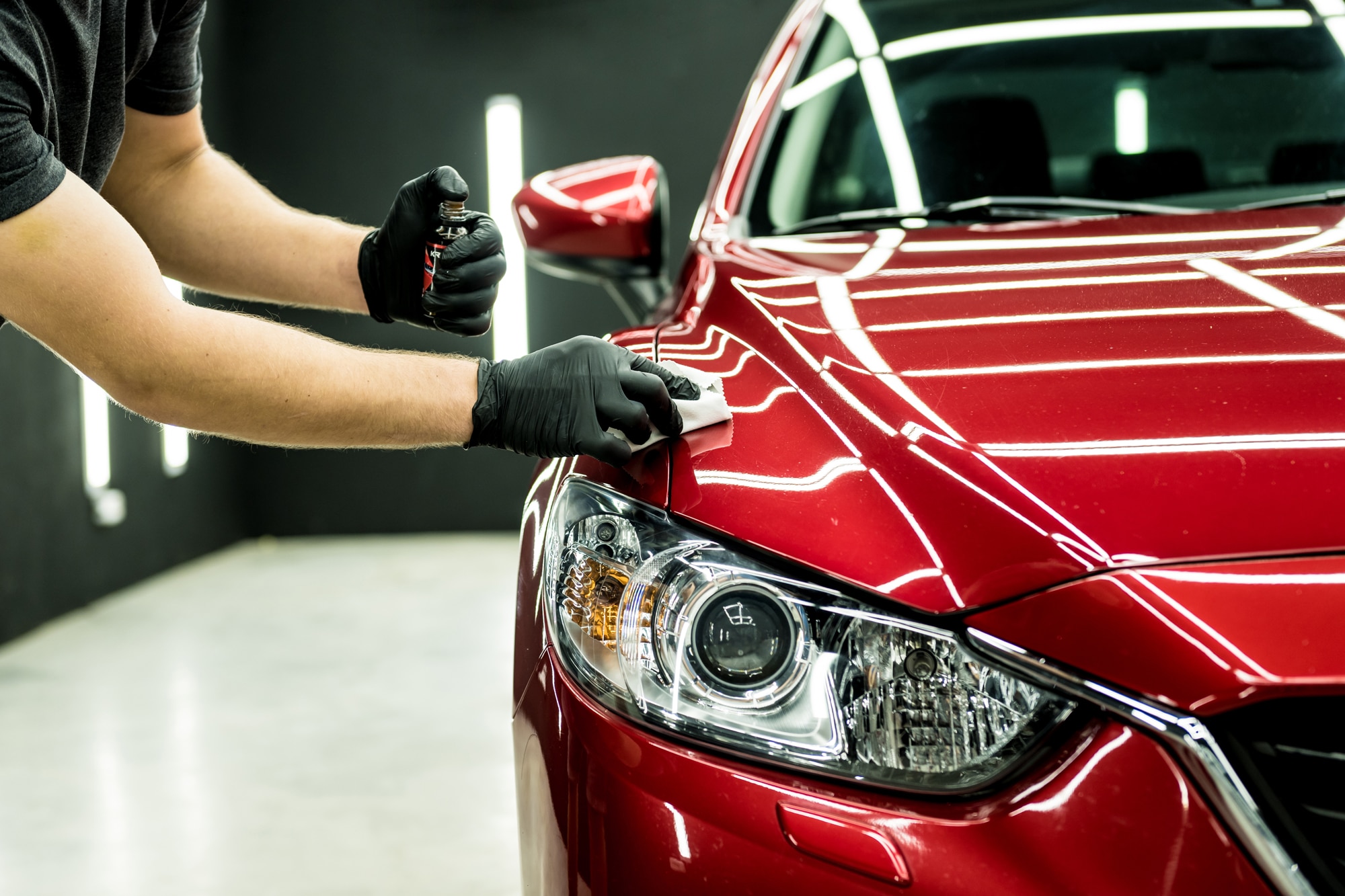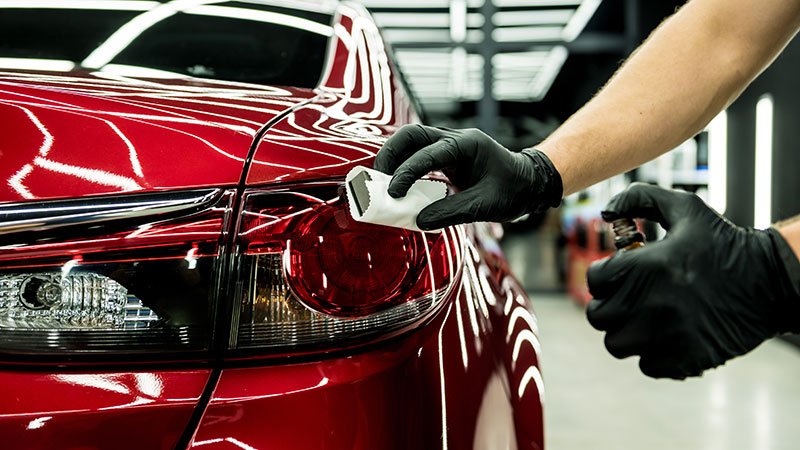Why So Fresh & So Clean Detailers Ceramic Coating Is the Ultimate Selection for Automobile Fanatics
Why So Fresh & So Clean Detailers Ceramic Coating Is the Ultimate Selection for Automobile Fanatics
Blog Article
The Science Behind Ceramic Finish: Why It's Necessary for Your Car
Recognizing the science behind ceramic coating exposes its value for automobile protection and upkeep. As we explore the nuances of ceramic covering, the ramifications for both the longevity and aesthetic quality of your vehicle end up being progressively clear.
What Is Ceramic Covering?
Ceramic covering is a cutting-edge safety layer applied to an automobile's outside, designed to enhance its durability and look. Comprising a fluid polymer that chemically bonds with the manufacturing facility paint, this innovative technology creates a robust shield against ecological contaminants such as dust, UV rays, bird droppings, and road salt. Unlike conventional wax or sealers, which might call for regular reapplication, ceramic finishes give lasting protection that can endure for several years with correct maintenance.

In addition to its safety top qualities, ceramic coating can also add to the lorry's resale value by stopping and preserving the paintwork oxidation. In general, ceramic covering represents a substantial improvement in automobile care, offering lorry owners with an effective remedy for keeping their financial investment for several years ahead.
Exactly How Ceramic Layer Works
The process behind ceramic finishing entails a complex interaction in between the layer's molecular structure and the vehicle's paint surface area. Ceramic coatings are composed largely of silica dioxide (SiO ?) and other chemical substances that create a resilient layer of protection when put on a lorry's exterior. Upon application, the finishing creates a semi-permanent bond with the paint, thanks to its nanoscale bits that penetrate the microscopic pores of the surface.
As the layer treatments, it undertakes a chain reaction that boosts its hardness and hydrophobic properties. This response solidifies the finishing, successfully creating a protective barrier that is immune to environmental impurities such as dust, UV rays, and chemical etching. The outcome is a surface that wards off water, creating it to grain up and roll off, therefore decreasing the danger of water areas and stains.
Additionally, the level of smoothness of the ceramic coating decreases rubbing, which aids to stop scratches and swirl marks. By sticking firmly to the paint, the coating also aids in keeping the automobile's aesthetic charm over time, inevitably protecting its value and look. This elaborate procedure highlights the sophisticated technology behind ceramic finishings, making them a premium option for vehicle defense.
Trick Advantages of Ceramic Finishing
Often considered as a game-changer in automobile upkeep, ceramic finish provides countless advantages that expand past mere aesthetics. One of one of the most substantial advantages is its remarkable security against environmental pollutants. Unlike conventional wax, ceramic layers create a strong chemical bond with the vehicle's paint, providing a a fantastic read durable obstacle against UV rays, bird droppings, tree sap, and roadway salt.
In addition, ceramic coatings possess hydrophobic homes, which means they fend off water and various other liquids. This feature not only assists in keeping the automobile cleaner for longer durations but additionally helps with much easier washing, as dirt and gunk are much less likely to comply with the surface area.
Furthermore, ceramic coatings enhance the automobile's gloss and radiate, guaranteeing that it preserves a showroom-like look with time - So Fresh & So Clean Detailers Ceramic Coating. The long life of ceramic layers is an additional engaging benefit; they can last several years with proper maintenance, thus reducing the frequency of reapplication contrasted to standard waxes
Contrast With Typical Wax
When comparing ceramic coatings to standard wax, it's vital to recognize the considerable differences in sturdiness and security. Ceramic layers are crafted from innovative nanotechnology, supplying a robust layer of protection that can last numerous years. On the other hand, typical wax typically lasts just a few weeks to a couple of months, needing frequent reapplication to maintain its performance.
The chemical composition of ceramic coverings allows them to bond at a molecular degree with the lorry's paint, producing a long lasting shield versus ecological impurities such as bird droppings, tree sap, and UV rays - So Fresh & So Clean Detailers Ceramic Coating. Typical wax, while using a momentary luster, lacks this level of bonding, making it more at risk to destruction from harsh weather and chemicals

Maintenance Tips for Ceramic Coating
Making certain the durability and efficiency of a ceramic covering needs regular maintenance. To optimize the advantages of your ceramic covering, regular cleaning is necessary. Utilize a pH-neutral car hair shampoo and a microfiber cloth or sponge to avoid damaging the surface area. Clean your automobile every 2 weeks to prevent impurities, such as dust and roadway grime, from bonding to the covering.
Furthermore, take into consideration utilizing a ceramic upkeep spray or booster every couple of months. These products enhance the hydrophobic homes of the coating and add an added layer of protection. When drying you could try this out your lorry, use a microfiber towel to avoid water areas.
Stay clear of automatic cars and truck cleans with brushes, as they can endanger the integrity of the finish. Instead, decide for touchless laundries or hand washing techniques. If your car experiences difficult pollutants like tree sap or bird droppings, remove them promptly to stop damage.
Last but not least, periodic evaluations are vital. Seek any signs of wear or damages to the covering, and consult a specialist detailer if repair work or reapplication is necessary. By complying with these maintenance suggestions, you can guarantee your ceramic covering stays efficient and your vehicle maintains its pristine appearance.
Conclusion
In verdict, ceramic coating represents a significant innovation in lorry protection innovation, providing a lasting and sturdy obstacle versus environmental contaminants. The premium benefits of ceramic finish make it a vital investment for automobile owners seeking to protect their car's appearance and integrity over time.
Recognizing the science behind ceramic layer exposes its importance for car security and maintenance (So Fresh & So Clean Detailers Ceramic Coating).The process behind ceramic coating includes an intricate interaction in between the covering's molecular framework and the vehicle's paint surface. Unlike conventional wax, ceramic coatings create a solid chemical bond with the car's paint, supplying a long lasting obstacle against UV rays, bird droppings, tree sap, and roadway salt
Eventually, while traditional wax may be more budget-friendly originally, the lasting advantages of ceramic coverings make them a superior selection for lorry defense.

Report this page